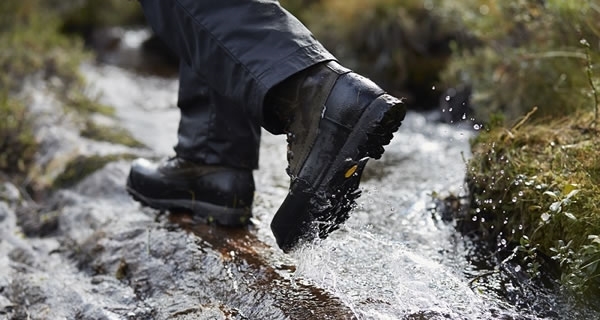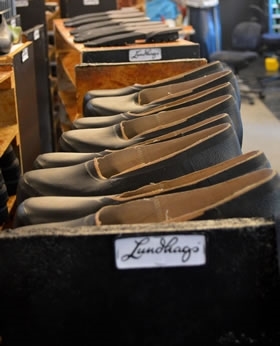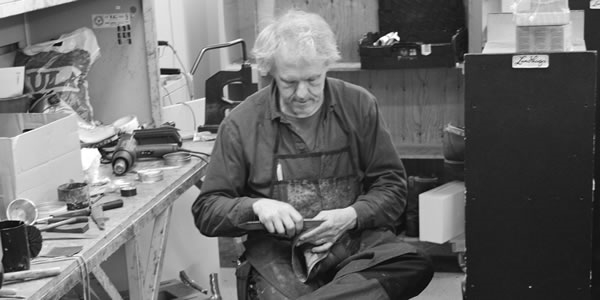In 1932 Jonas Lundhag, the son of a shoemaker, registered the company that is today known as Lundhags. That Jonas became a shoemaker should have come as no surprise after he made himself a pair of boots as a 12-year old. However, few would have imagined the fame his boots would go on to gain.

The years since have seen Lundhags boots worn by British paratroopers during the Falkland Wars, during Mount Everest expeditions, and by countless outdoor enthusiasts.
With their roots still firmly planted in Jämtland, the region of Sweden where Jonas started out making boots for local hunters, loggers, and the native Sami people all those years ago, Lundhags aim is simple - make the best boots in the world.
As with much of what Lundhags do, the idea is simple, yet the execution complex.
At the heart of Lundhags boot is the shell principle. The idea is that you have a boot that consists of multiple layers that you can regulate depending on outside temperature and the intensity of the activity undertaken. Think this sounds familiar? That’s because it is.
This is the same principle that Scandinavians have used for clothing for centuries, if not longer. In this case the boot itself provides an uncompromising, durable and rugged protection against the elements while you provide the inner layers by adding an insole and using two pairs of socks, preferably made from merino wool of course. A simple idea. Making it work comes down to quality.
 There are many benefits from this approach. First of all, having no permanent lining means that the boot can be easily adapted for either summer or winter simply by varying the thickness of the socks you are wearing.
There are many benefits from this approach. First of all, having no permanent lining means that the boot can be easily adapted for either summer or winter simply by varying the thickness of the socks you are wearing.
The lack of permanent lining also means that there is nothing in the boot to hold moisture. In the middle of a day of hard walking, all you need to do is bring out fresh socks, take out the insole and you will have a dry boot for the remainder of the day knowing that the boot itself will dry quickly.
The same principle holds true overnight. The appeal of a fast drying boot is clear when considering the second day of a hike started out in damp boots. Wearing two pairs of socks also means that any rubbing caused by wearing the boot will happen between the socks rather than between the sock and your foot. This means fewer blisters and a happier hiker.
Functionality is everything to Lundhags, on their boots you will find no extravagant, unnecessary, frills. If it isn’t functional, you won’t find it on a Lundhags boot. The idea is that you age together with your boot, that a change of soles is all that is needed after 20 years of hard use.
In fact, being able to repair the boots easily is taken into account during the production. The use of a large number of separate pieces ensures that the individual parts can be replaced, if down the line they become worn. After all, Lundhags boot is made to age with grace.

Of course, no matter how well-made they are, ensuring that your relationship with your boots is long and happy comes down to care. When you come home, don’t just throw them in the back of a cupboard.
Taking the time to wash them off, applying grease or wax, and then letting the boot dry before you put them away can add years to the lifespan of the boot.
As weird as it might sound, Lundhags are virtually alone when it comes to building boots according to these simple but effective principles. While making boots this way will never be a low cost alternative, the effort and material put into it would never allow that, the amount of wear you get out of them makes them cheap in the long run.
Find out more about Lundhags at the Nordic Outdoor website.
Promote your business with the GWCT
A GWCT Trade Membership entitles you to a FREE guest blog spot which will be promoted directly to over 20,000 GWCT members and non-members alike.
GWCT Trade Membership benefits >